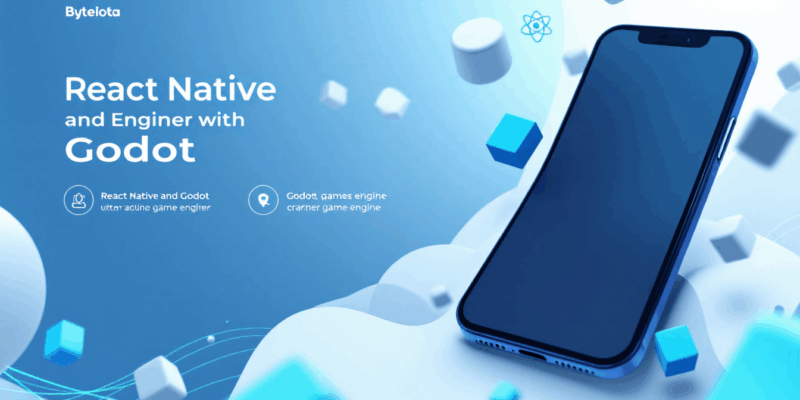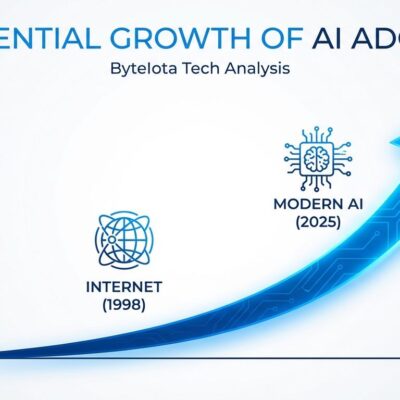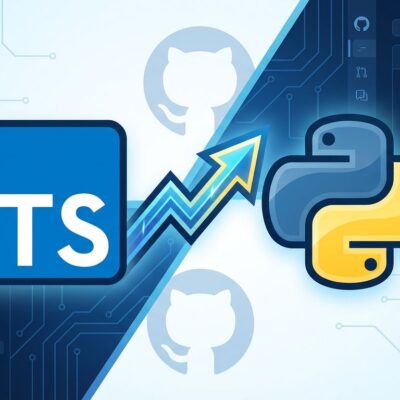
A new open-source library exploded from zero to 2,224 GitHub stars in six days—a rare signal that something significant just shifted in mobile development. React Native Godot, released November 1st by Born.com and Migeran, lets developers embed the Godot game engine directly into React Native applications. Translation: professional 3D rendering, physics simulations, and rich interactive content can now live inside standard mobile apps, no compromises required.
Breaking the False Dichotomy
This matters because mobile developers have been stuck with a lousy choice for years. Build with React Native or similar frameworks? Great for UI and standard app features, but 2D animations are about as fancy as you can get. Need real 3D or complex physics? You’re forced into full game engines like Unity or Unreal—massive overkill if you just want to add a 3D product viewer or interactive demo to an otherwise normal app.
React Native Godot breaks that false dichotomy. Born.com, a major company already using this to serve millions of users in production, partnered with mobile specialists Migeran to create something that wasn’t previously possible: embed a professional game engine only where you need it. The technical foundation is solid too—Godot runs on a separate thread, so rendering complex 3D scenes won’t freeze your UI or block React Native’s JavaScript thread.
Real-World Applications
The implications ripple across dozens of use cases. E-commerce apps can now show furniture in your living room with realistic lighting and physics. Fitness apps can demonstrate proper form with 3D animations that respond to your touch. Education apps can offer interactive physics simulations or explorable 3D anatomy models. Real estate apps can embed full virtual property tours without kicking users into a separate “game mode.” The line between app and game just got a lot blurrier.
Perfect Timing
Timing explains the explosive growth. Godot has been on a tear since Unity’s disastrous 2023 runtime fee controversy sent developers sprinting toward open-source alternatives. Godot is MIT licensed—free forever, no royalties, no surprises. React Native powers thousands of major apps from Facebook to Discord, making it one of the dominant mobile frameworks. Modern phones handle 3D rendering easily now. And apparently, based on 2,224 stars in six days and 71 Hacker News upvotes within 24 hours, developers have been waiting for exactly this bridge between ecosystems.
Technical Architecture
How does it actually work? React Native Godot is built on LibGodot, a C++ foundation that handles the heavy lifting. You create your interactive content in Godot—scenes, scripts, assets, physics—then export it for iOS and Android. The library embeds Godot’s rendering windows into your React Native views. From TypeScript or JavaScript, you get full access to Godot’s API: instantiate objects, call methods, set properties, hook into Godot’s signal system. You can start, stop, pause, or restart Godot instances programmatically. Multiple instances can run simultaneously if needed. It’s genuinely impressive engineering.
Not a Silver Bullet
But let’s be clear about what this isn’t. This is not a silver bullet for every animation or visual flourish. If you’re adding button hover effects or loading spinners, stick with Lottie or React Native’s built-in animation library. React Native Godot increases your bundle size—you’re embedding a game engine, after all. There’s a learning curve if your team doesn’t know Godot. Battery and performance considerations are real, though the separate thread architecture helps significantly. This is for situations where you genuinely need 3D rendering, realistic physics, or complex interactive content that simpler tools can’t handle.
Strong Early Signals
The early adoption signals are strong. Ninety-one forks in six days means developers are already experimenting with production use cases. Born.com’s “millions of users” claim provides production-ready credibility that most new libraries lack. Only three open issues on GitHub suggests the maintainers are responsive and the codebase is stable for a week-old project. The Hacker News discussion shows technical audiences immediately grasping the potential.
A Paradigm Shift
This could be the start of a real shift. For years, “app” and “game” have been separate categories with separate tools and separate developer communities. React Native Godot suggests a future where rich interactive 3D content becomes a standard expectation even in utility apps. Where e-commerce apps routinely offer realistic product visualization. Where fitness apps show you exactly how to move. Where education apps let you manipulate 3D models to understand concepts. Where the question isn’t “should we build an app or a game?” but “which parts of our app need game engine capabilities?”
Early days still. The real test comes over the next 90 days as more companies experiment with production deployments and the community discovers edge cases. Performance benchmarks will matter. App store approval policies might raise questions about game engines in non-game apps. Developers will need to figure out when this makes sense versus when it’s overkill.
But the demand is clearly there. Zero to 2,224 stars in six days doesn’t happen for incremental improvements. This bridges two massive ecosystems—React Native’s tens of thousands of developers and Godot’s rapidly growing game developer community—at exactly the right moment. Open source, proven at scale, technically sound architecture, perfect timing. Check out the repository on GitHub if you’re building React Native apps and wondering how to add that 3D feature you’ve been avoiding. The paradigm just shifted.











